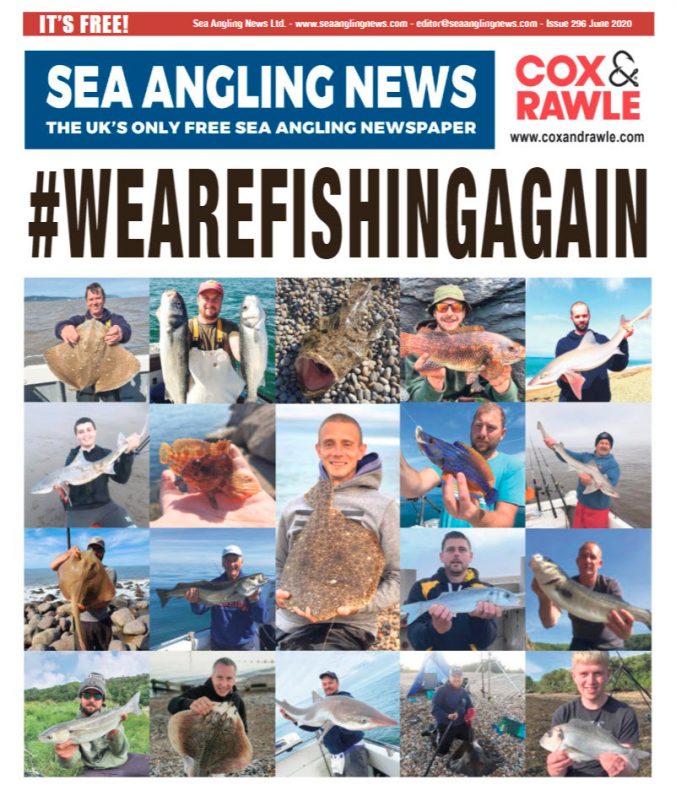By Heber Crawford
I have never fished for big sharks before, but I have been researching the local sharks for over a year. I knew the waters around the Isle of Wight have a reputation of big sharks in years gone by so that’s where I began to look.
I set of from home at 8:00 am on 6th August with around 15 kg of home-made chum: a mix of bran, oats and oily fish mixed with fish oils that had been sitting for two days stewing. The trip didn’t start well because it was a real struggle to find bait, but after around four hours I had some nice fresh bait in the box. I set course for the famous St Catherine’s area I had read so much about. My drift started at around 2pm with one rod set to fish deep and one shallow. I spent the day looking at my two floats with much anticipation. Before I knew it, darkness was setting in, I was a long way from home and on my own. I cooked myself some fresh mackerel and had a cup of tea just as the last of the light was fading. I started to slowly nod off to sleep in my chair.
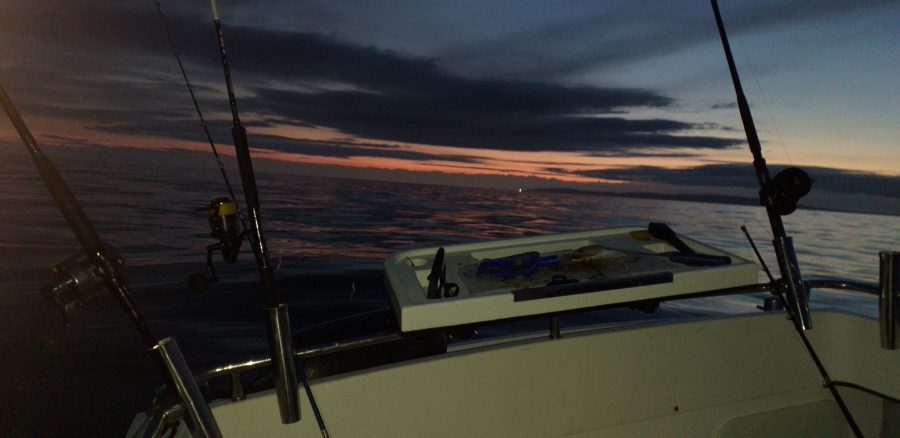
I woke around 20 minutes later and got up to top up the chum bags. I was shocked to see one was missing from the side of my boat! I was a little unsure what had happened, but 15 minutes later in the pitch black with the only light given to me by the moon my real screamed off. Absolute panic kicked in – I didn’t have time to put my deck light on, I grabbed my rod and held on for dear life as my 50lb class Abu Suveran was bent double. Line was flying from my real at an alarming rate. My heart was beating out of my chest and my legs had turned to jelly. I was alarmed at the amount of line coming from my reel but after what seemed like an age it stopped dead. My rod regained its normal shape and the reel was not singing any more. The fish had slipped the hook.
I have never felt power like that before I was in shock. I continued to fish on for a short while and when the chum ran out and my bait had gone, I headed home in the early hours of the morning. The ride home seemed to take forever. I arrived home in a state of disbelief at what had just happened. I laid in bed trying to sleep but sleep did not come to me. I was buzzing.
After trying for three hours to get some much-needed sleep I dragged myself back out of bed. I raided my bait freezer for everything in there. I took a bucket-full of bran and the last of my fish oil to make some more chum. I was under-prepared but my mind was racing from the excitement from the night before. I grabbed some bottles of water from the fridge, the dinner my wife had made me the night before and made my way back to my boat in a complete daze.
My struggle for bait was even worse than the day before and it took hours to finally put two mackerel in my bucket. I made my way back to where I lost the fish the night before. With the boat on autopilot I set about smashing up everything I had brought from the freezer for my chum bag.
I got to my mark but I was feeling a little disheartened with my chum mix. The tide was starting to ease and my mind was all over the place. I had so much doubt in myself. I was extremely tired. My drift was slowing, I had probably drifted over a mile and had been fishing for a little over a hour. Sitting in my chair with my thoughts fixed on what had happened the night before, I heard “click, click, click” then nothing. “It’s the tide,” I said to myself. Then it happened again but faster this time. I stood up and 30 yards from my boat an absolute monster came flying out of the water almost completing a backflip. My first thought was that it was a huge dolphin and then my real screamed into life.
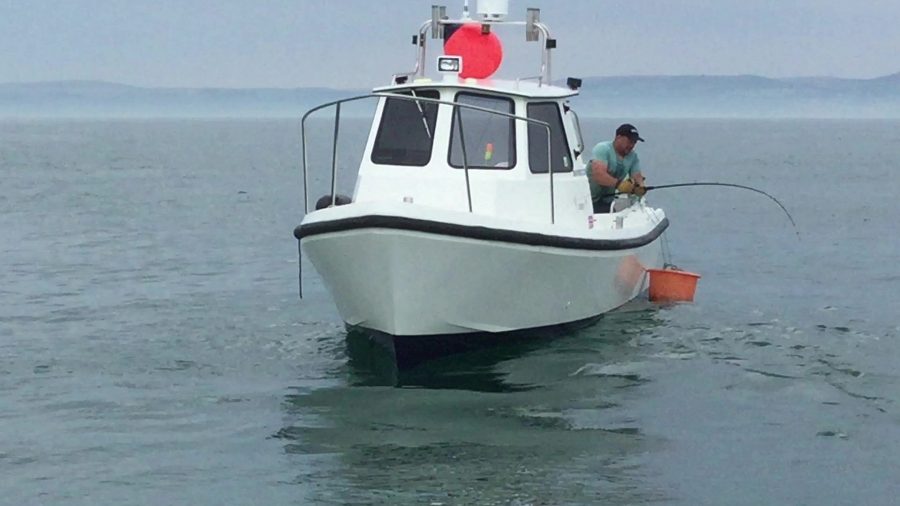
I grabbed my rod, line flying from my reel. 70 yards away it jumped again, magnificently clearing the water. It continued to strip line and after another 100 yards it cleared the water for a third time. Absolute panic set in. I ran into my cabin with rod in hand – nearly snapping my rod on the way. I started my engine and flipped the engine into gear. All the time I’m hanging my rod out of the cabin door trying to hold onto an animal set on trying to make its way to France.
Then it happened again. My reel stopped singing, my rod straightened. It had gone. I stood in utter disbelief.
“No,” I said to myself. I reeled like crazy. Nothing. I reeled again as fast as I could. There was nothing there. 50 yards from the boat it jumped again, thrashing its head wildly. My line tightened, my rod bent double. It was on again! I locked my drag and line started to fly out. I continued to chase down the shark to get it within 30 or 40 yards from the boat then it would fly off again. All the time I’m in and out of my cabin steering the boat, in and out of gear. After about an hour of madness I started to compose myself. I looked at the rear of my boat and to my amazement I still had two rods in the water and my chum basket! I had to get the other rods wound in whilst trying to keep hold of the rod with the shark on from being ripped from my hands.

Leader was starting to appear on my reel. I saw the shark at the side of the boat. I was in shock. I looked it right in the eye and it steamed straight to the bottom. I was dragged round and round my boat for the next half hour – rods on the floor, buckets everywhere, rods propped against the gunnels – a total mess.
I managed to find my gloves and then the shark stopped dead. “I’ve hit a snag” I thought. I couldn’t move it. Stalemate. I hung on for dear life trying to put as much pressure on the fish as I possibly could. I was stuck squashed up against the gunnels, rod tip in the water, hand trapped under the rod against the handrail. I could feel my phone getting crushed as I was getting raised up onto my toes with the rod going even further into the water.
I backed the drag off for fear of losing the rod. The shark made another big run. Panic was setting in again. I couldn’t tame the beast! In the distance I could see a boat. I started shouting and waving my blue hand towel. I needed help, I was on my own and I had never seen anything so big. I have never felt such power. I got the shark back to the boat and it went dead again, then it went under the boat dragging me around and around, trying it’s hardest to break me off on the underside of my boat. All the time I’m trying to wave my towel and shout to the boat I could see coming past me. I could see it was Peter Churchill from Southsea Marina I was calling him and waving like a madman. He couldn’t see me, I was too far away and he was slowly getting further and further away.
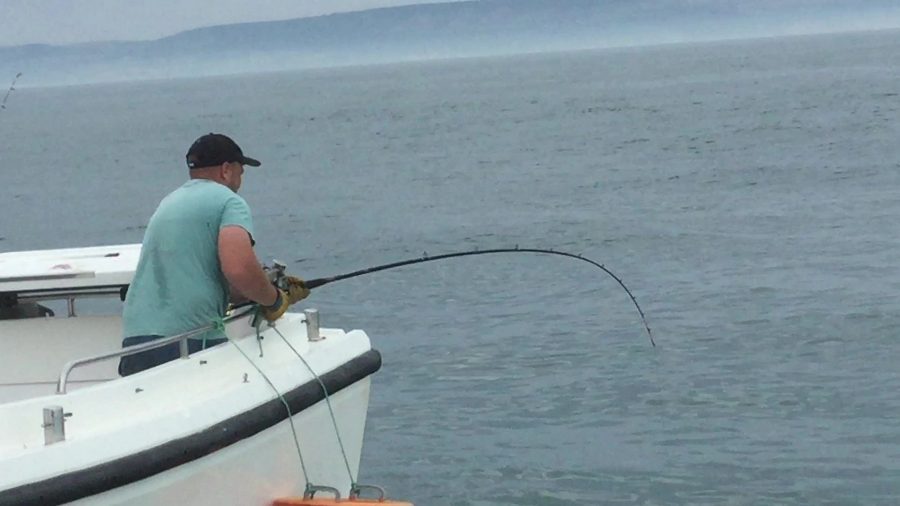
I was really beginning to panic now. I was knackered, wet through, my legs shaking, cramps in my arms, my ribs hurting and my groin on fire from the rod butt digging into me. This fight was now approaching two hours. I didn’t have a fancy rod belt holder or harness – I had been fighting this fish rod butt slung under arm or wedged into my groin. The pain was real. I looked back one last time to see Peter turning the boat around and heading for me!
This gave me a big boost of energy and I cheered to myself. “Yeah!” I shouted. All the time the beast deep under the boat was really putting the hurt on me. Peter made circles around the boat. I believe this helped me by stopping the shark from running any more. Before I knew it I had the leader back on my reel. I caught sight of the shark again. I could see my wire leader approaching. I chucked the rod down and dived on the wire wrapping around my gloved hands. It tried to power-dive down again. I got dragged across the deck and half pulled in but I pulled back as hard as I could and got his head up.
It’s tail was thrashing wildly. I was in awe of this creature. This was the pinnacle of my fishing career. My phone was destroyed but I knew Peter had been filming me from his boat for what seemed an eternity. I was looking the shark in the eye. His head was in line with my cabin, the fork in his tail approaching seven feet away and the tip of his tail thrashing wildly 12 feet away. With the wire wrapped around my hands he relaxed and rolled on his side. I could see my hook in the corner of his mouth, a 12/0 circle hook with the barb filed off completely.
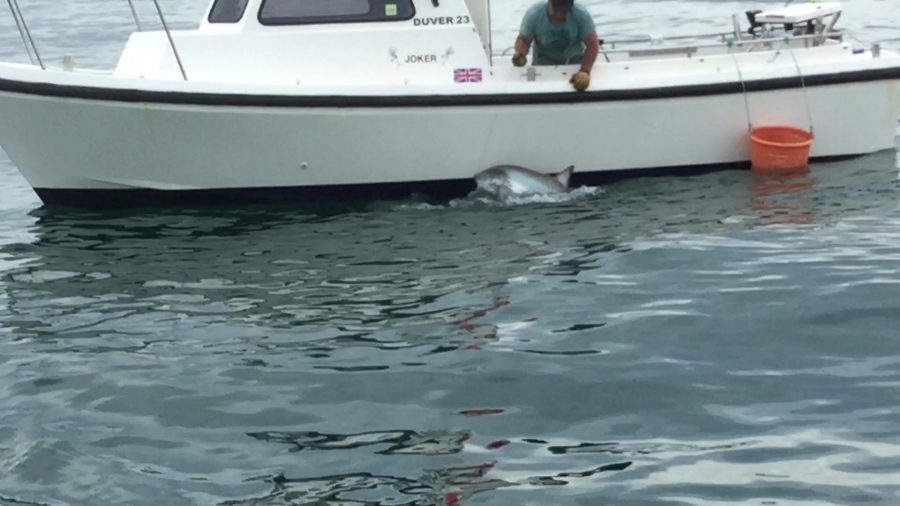
I flicked the wire once, twice and the third time the hook flew out. “Yes!” My fears subsided away. It was safely unhooked. One flick of its huge tail and down he went. Peter and his crew cheered and praised me. As they departed, I was star-struck. I couldn’t believe what had just happened to me. Stuck to the gunnels of my boat there’s a fish ruler over three feet long so I can gauge the sizes of fish with ease. I measured that shark when it eyed up in the water to the rule on the gunnel. It was more than twice the length easily to the fork of the tail. Conservative estimates of lengths between six and seven feet on many size charts give weights between 200lbs and 300lbs. I called it an estimate of 220lbs.
Threshers are one of the rarest sharks in British waters. I had only started shark fishing the day before. People had fished for these sharks for years and never seen one. It was one of the happiest moments in my life. I will never forget that fight – spectacular. A magnificent creature, released totally unharmed into the famous St. Catherine’s Deeps to live with the other legends.
Heber Crawford
August 2020
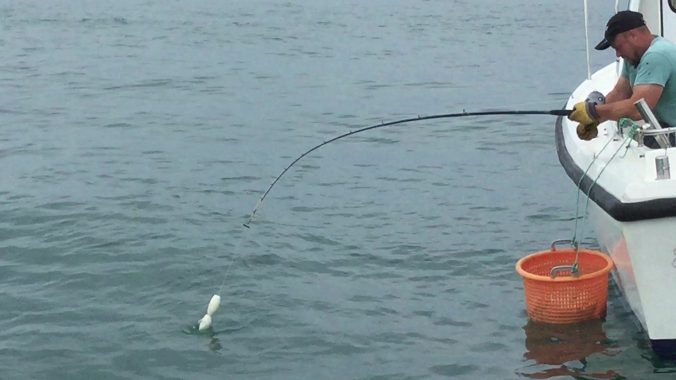
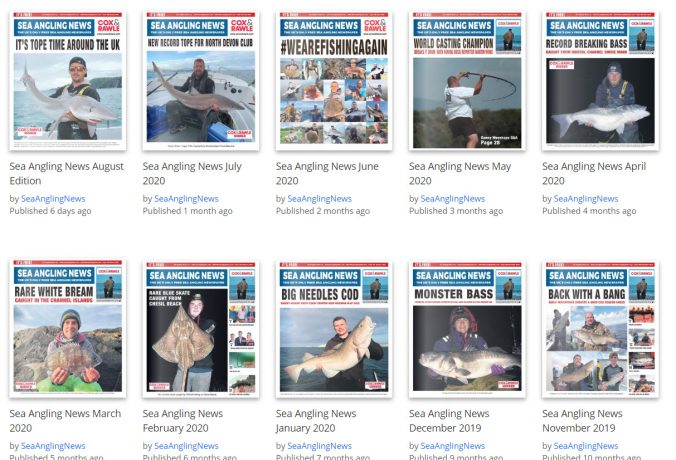
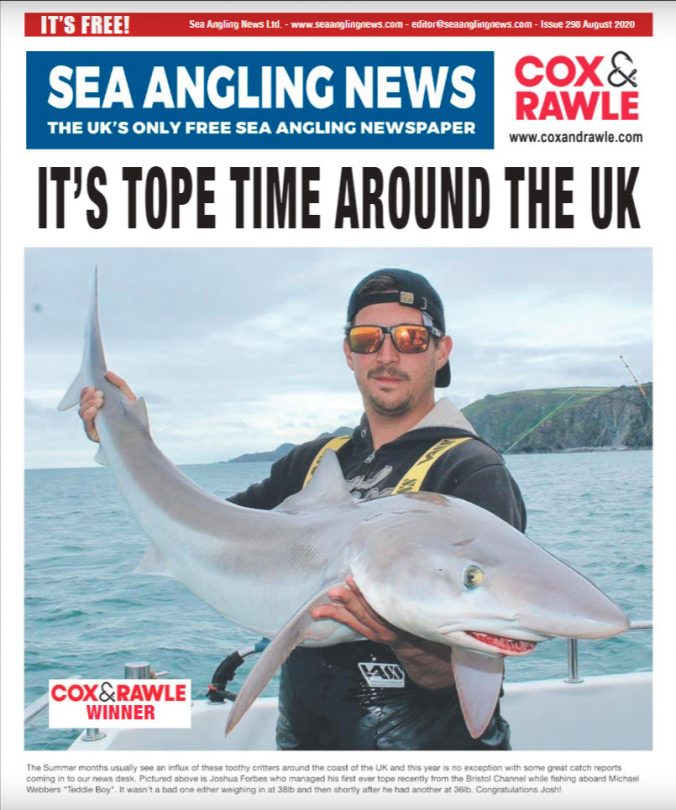
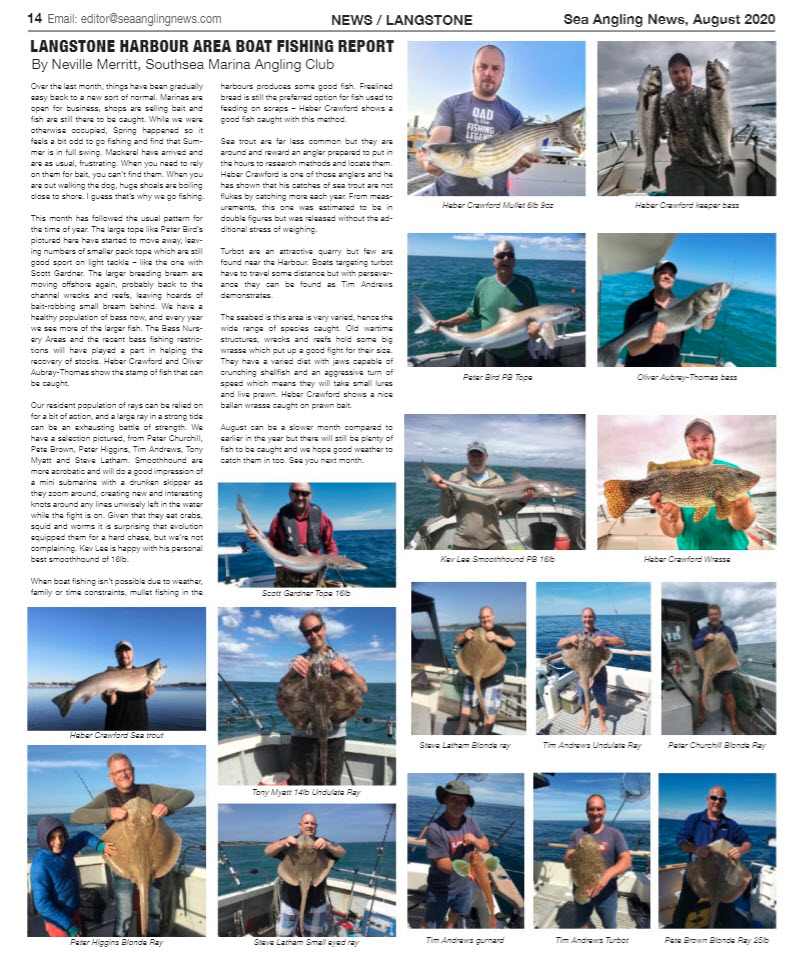
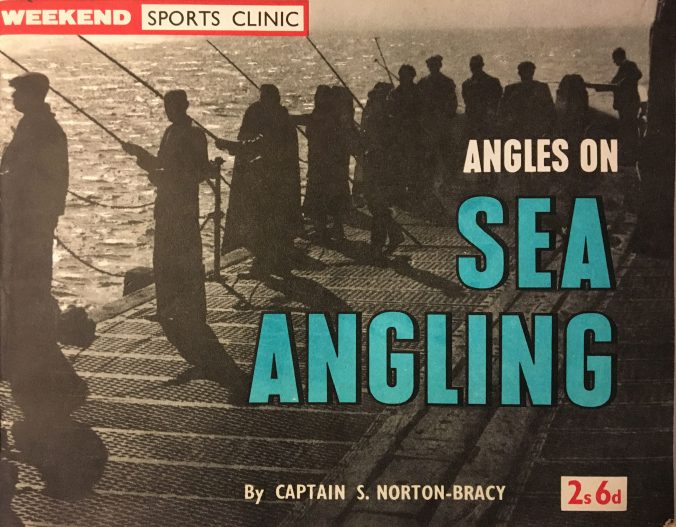
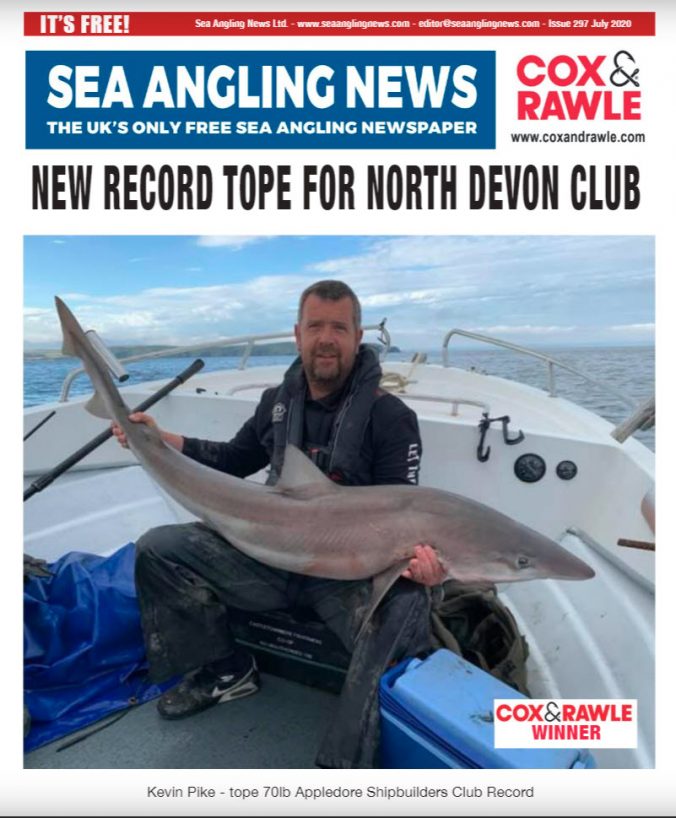

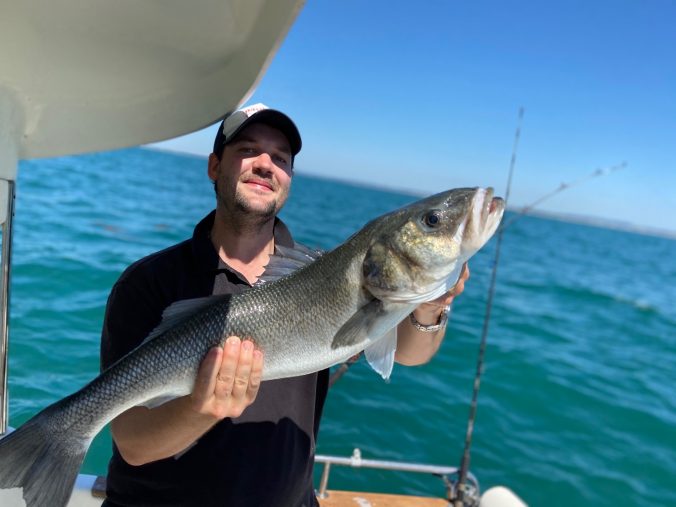
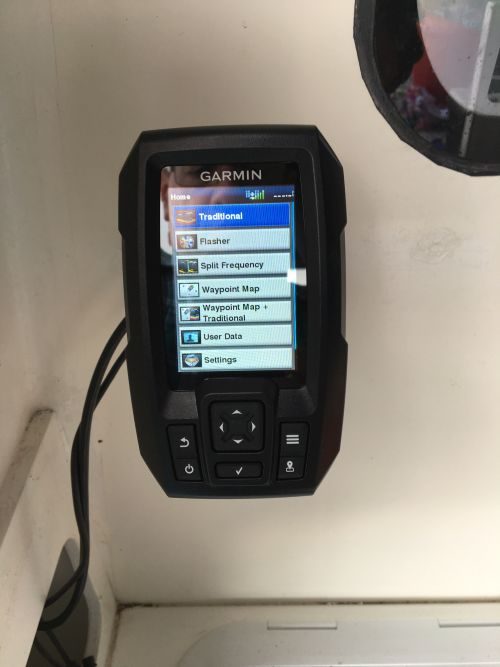
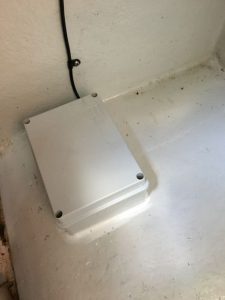
 Cut your foam to shape so it fits snugly in the box.
Cut your foam to shape so it fits snugly in the box.